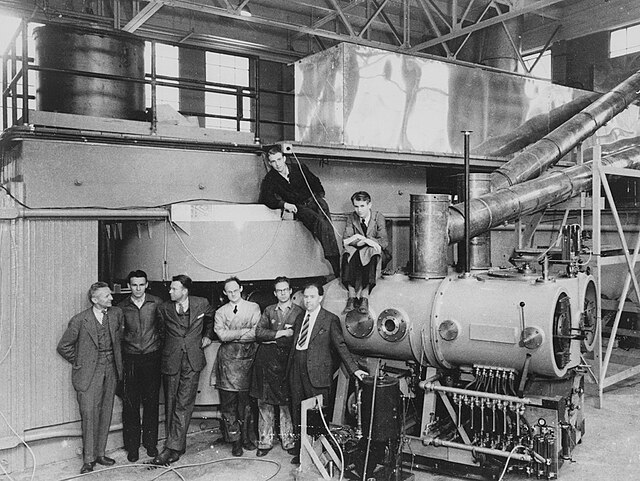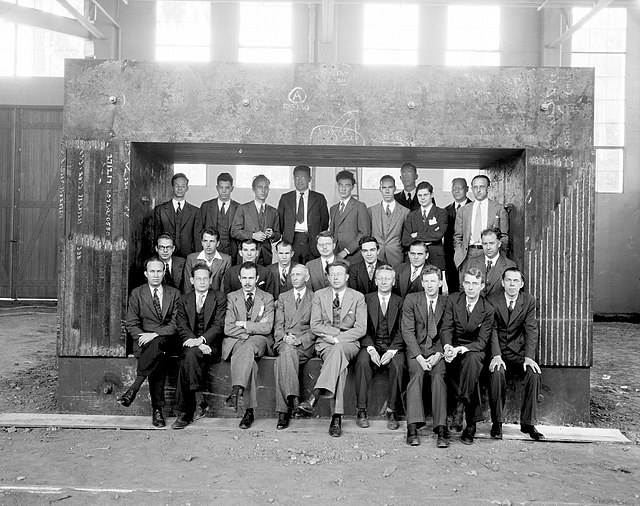Lawrencium is a synthetic chemical element; it has symbol Lr and atomic number 103. It is named in honor of Ernest Lawrence, inventor of the cyclotron, a device that was used to discover many artificial radioactive elements. A radioactive metal, lawrencium is the eleventh transuranic element and the last member of the actinide series. Like all elements with atomic number over 100, lawrencium can only be produced in particle accelerators by bombarding lighter elements with charged particles. Fourteen isotopes of lawrencium are currently known; the most stable is 266Lr with half-life 11 hours, but the shorter-lived 260Lr is most commonly used in chemistry because it can be produced on a larger scale.
Albert Ghiorso updating the periodic table in April 1961, writing the symbol "Lw" in as element 103. Codiscoverers Latimer, Sikkeland, and Larsh (left to right) look on.
The element was named after Ernest Lawrence.
Ernest Orlando Lawrence was an American nuclear physicist and winner of the Nobel Prize in Physics in 1939 for his invention of the cyclotron. He is known for his work on uranium-isotope separation for the Manhattan Project, as well as for founding the Lawrence Berkeley National Laboratory and the Lawrence Livermore National Laboratory.
Lawrence in 1939
Meeting at Berkeley in 1940 concerning the planned 184-inch (4.67 m) cyclotron (seen on the blackboard): Lawrence, Arthur Compton, Vannevar Bush, James B. Conant, Karl T. Compton, and Alfred Lee Loomis
The 60-inch (1.52 m) cyclotron soon after completion in 1939. The key figures in its development and use are shown, standing, left to right: Donald Cooksey, Dale R. Corson, Ernest Lawrence, Robert L. Thornton, John Backus, and Winfield Salisbury. In the background are Luis Alvarez and Edwin McMillan.
University of California Radiation Laboratory staff framed by the magnet for the 60-inch cyclotron, 1938; Nobel prize winners Ernest Lawrence, Edwin McMillan, and Luis Alvarez are shown, in addition to J. Robert Oppenheimer and Robert R. Wilson.






